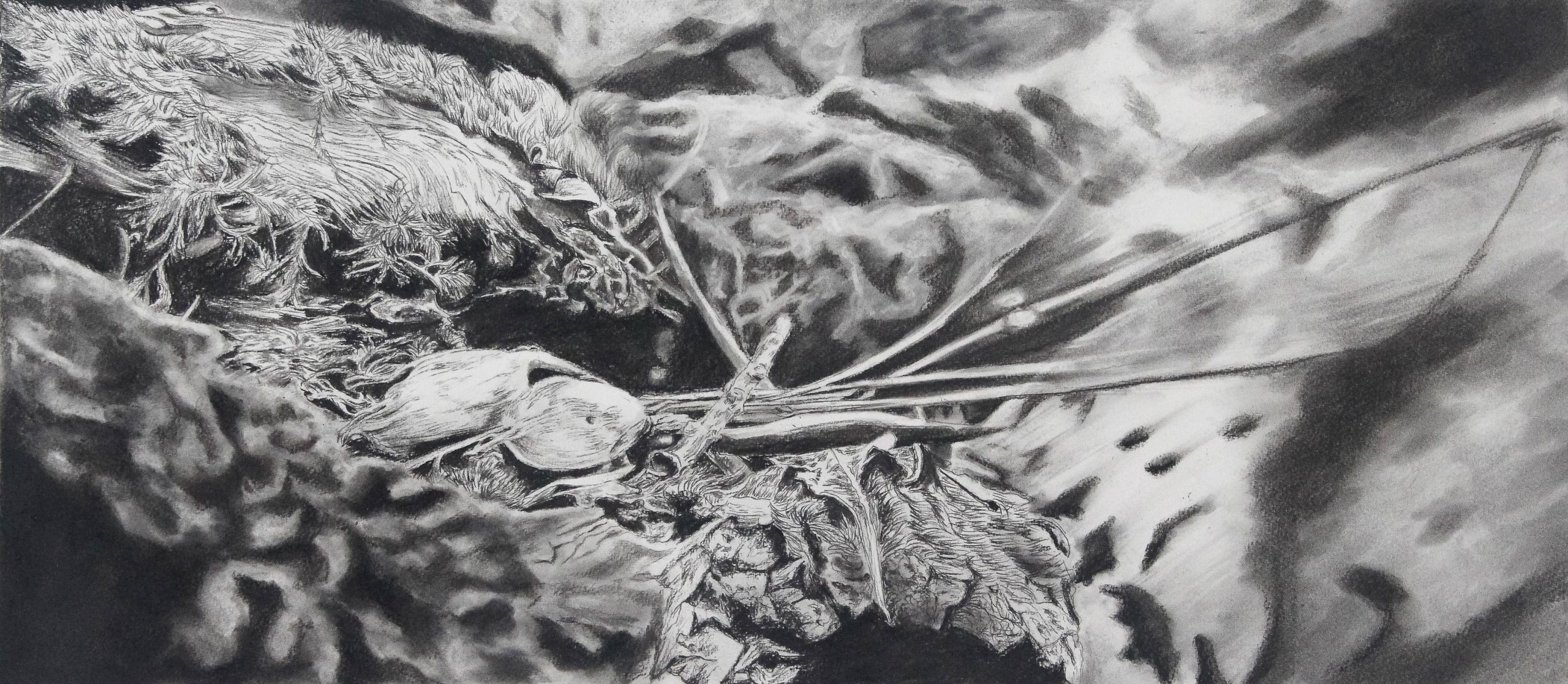
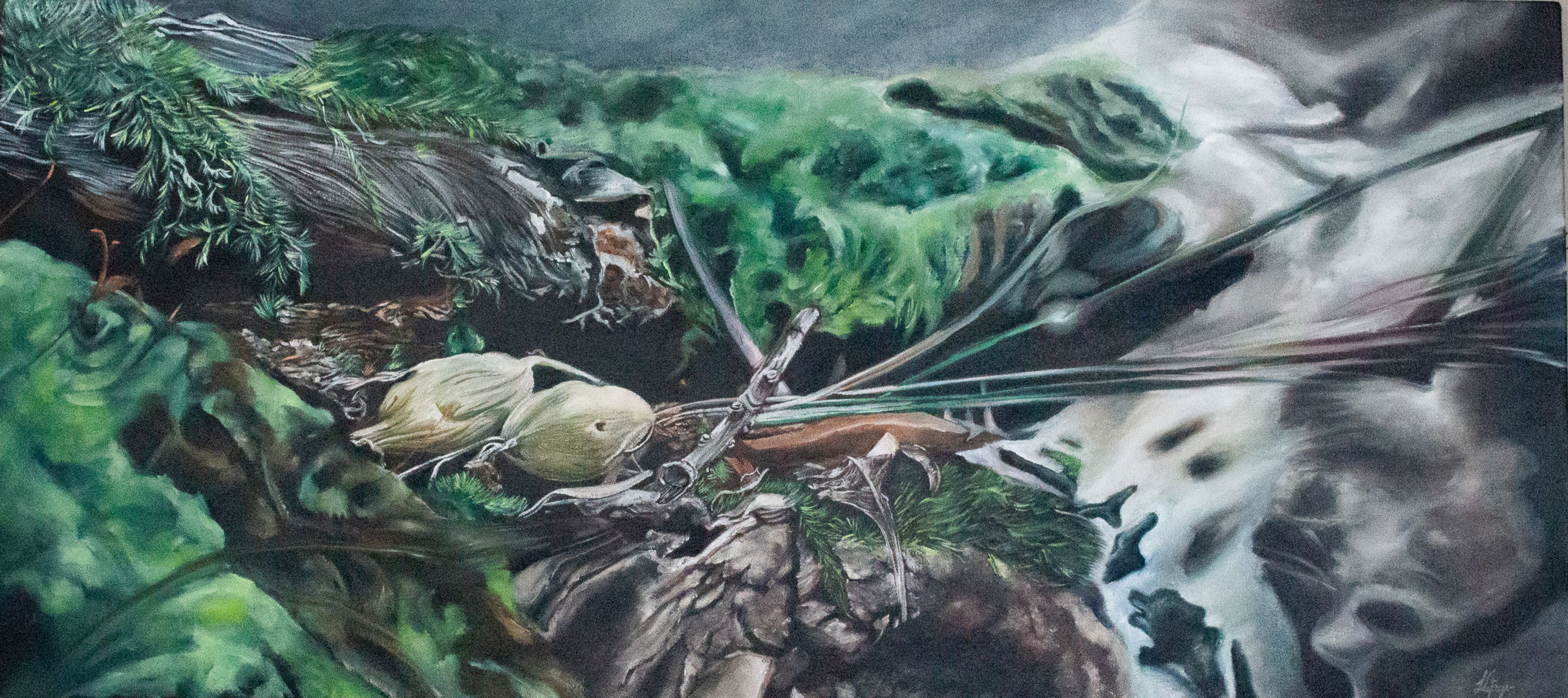
The Ephemeral Nature of Things
by Laurette de Jager
Hermanus Milkwood Forest, Western Cape, South Africa
Come to the pond,
or the river of your imagination,
or the harbour of your longing,
and put your lips to the world.
And live, your life —”Mornings at Blackwater” by Mary Oliver.
Blackwater pond has served as the origin for Mary Oliver’s life work, produced over 5 decades. This unassuming yet exquisite body of water led to works of such profound beauty that it has forever changed the way many of us see and experience the world. As Oliver said, “My work is loving the world.” The place from which my work originates, though likely far smaller than Blackwater, is no less significant or beautiful. Although sometimes just a piece of fenland during the dry season, it does provoke in me the same love of the world that Oliver speaks about. I know every one of these milkwoods intimately and have, to date, drawn parts of them seven times over and will likely do so many times more over the next decade. This is my body of water, the source of my life’s work. My way of showing how much I love the world.
The Ephemeral Nature of Things, is a series of digital photomontages, charcoal studies and paintings, investigating the concept of decay as it occurs in the natural world.
The intention of this series is to invite the viewer to contemplate the material reality, or nature of, the natural world in contrast to the virtual reality of modernity, thereby acknowledging that all things are ephemeral. These works are the genesis of an ongoing exploration of decay as metaphor for finding ways to “to live and die well with each other in a thick present” (Haraway 2016:1), while living in the climate crisis, the 6th mass extinction event, and the post-truth era.
My artistic process follows the documentation of my engagement with the natural world through photographs, which I manipulate through digital photomontage, thereby creating a Utopian worldview. The resulting utopian ideal is then reworked by exploring the photomontage in charcoal studies, engaging with the concept of the decaying trees (wood), in the photographs, by using dead, burnt wood (charcoal) to explore the image on a decimated pulped wooden format (paper), thereby engaging with the concept on a visceral level. This process, working with photomontage combined with artistic reinterpretation of the subject, is influenced by painters such as Eric Fischl, Neo Rauch, and Matthew Hindley. The concepts explored through photomontage and charcoal studies are further explored in oil paintings. In this way the photomontage becomes the Utopian ideal which is mirrored in the drawings and paintings depicting the Dystopian reality.
The objective of my work is to explore new ways of existing in a dying world.
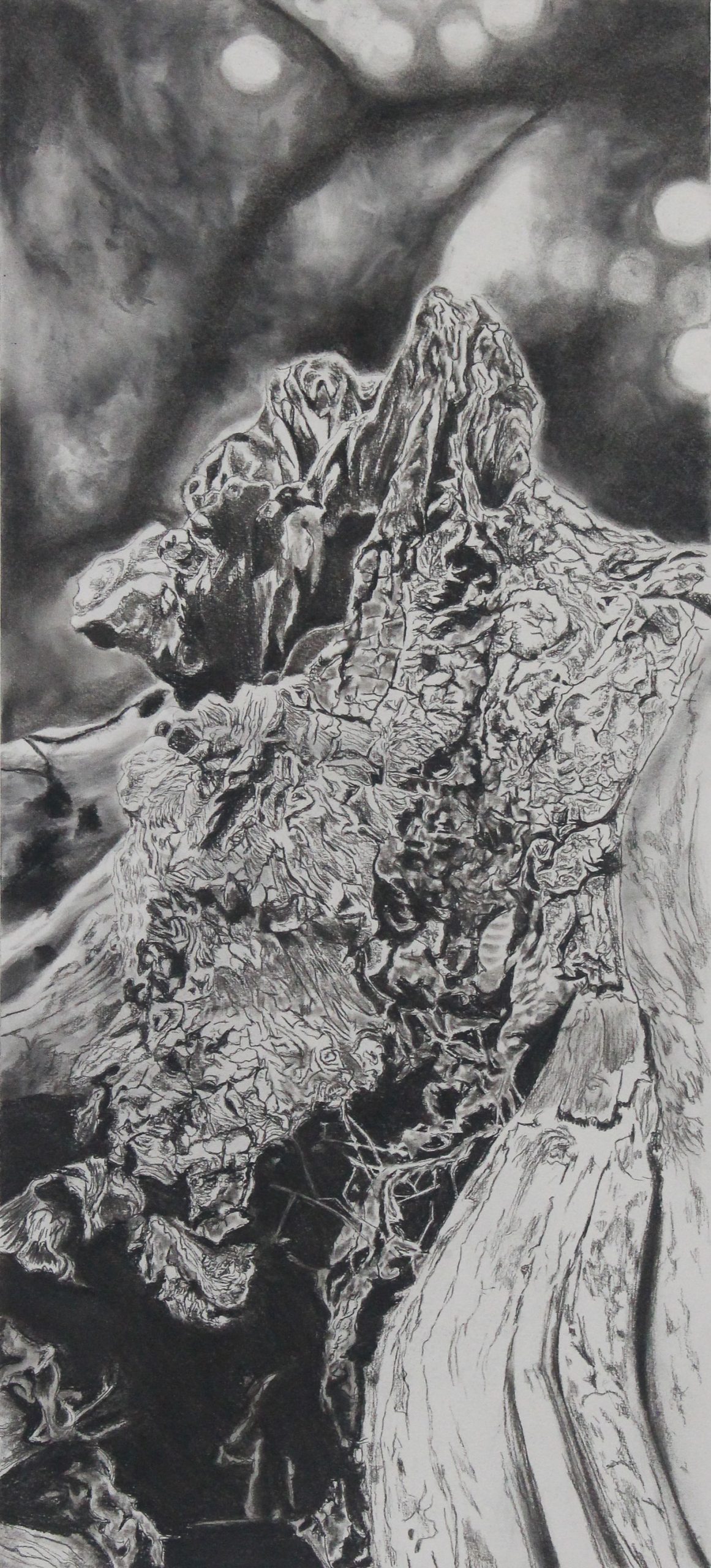
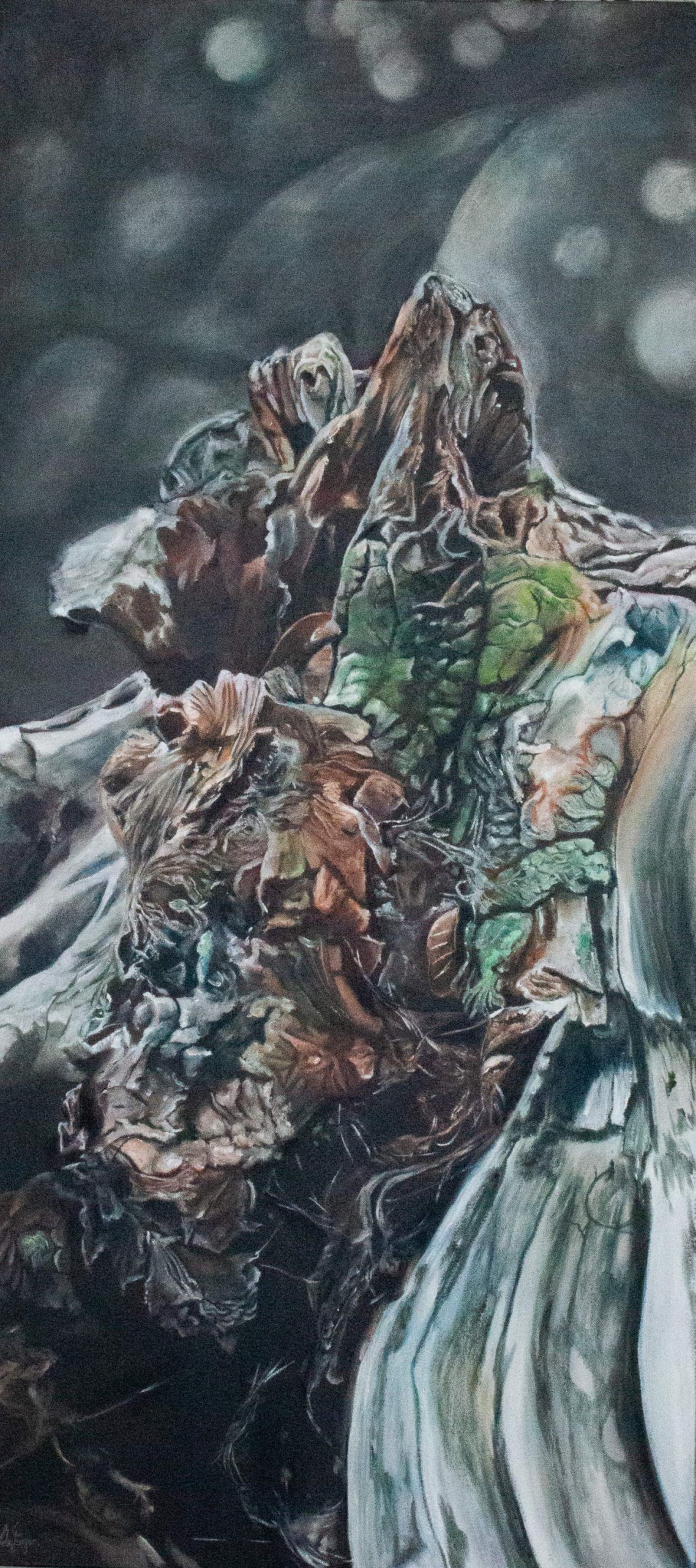
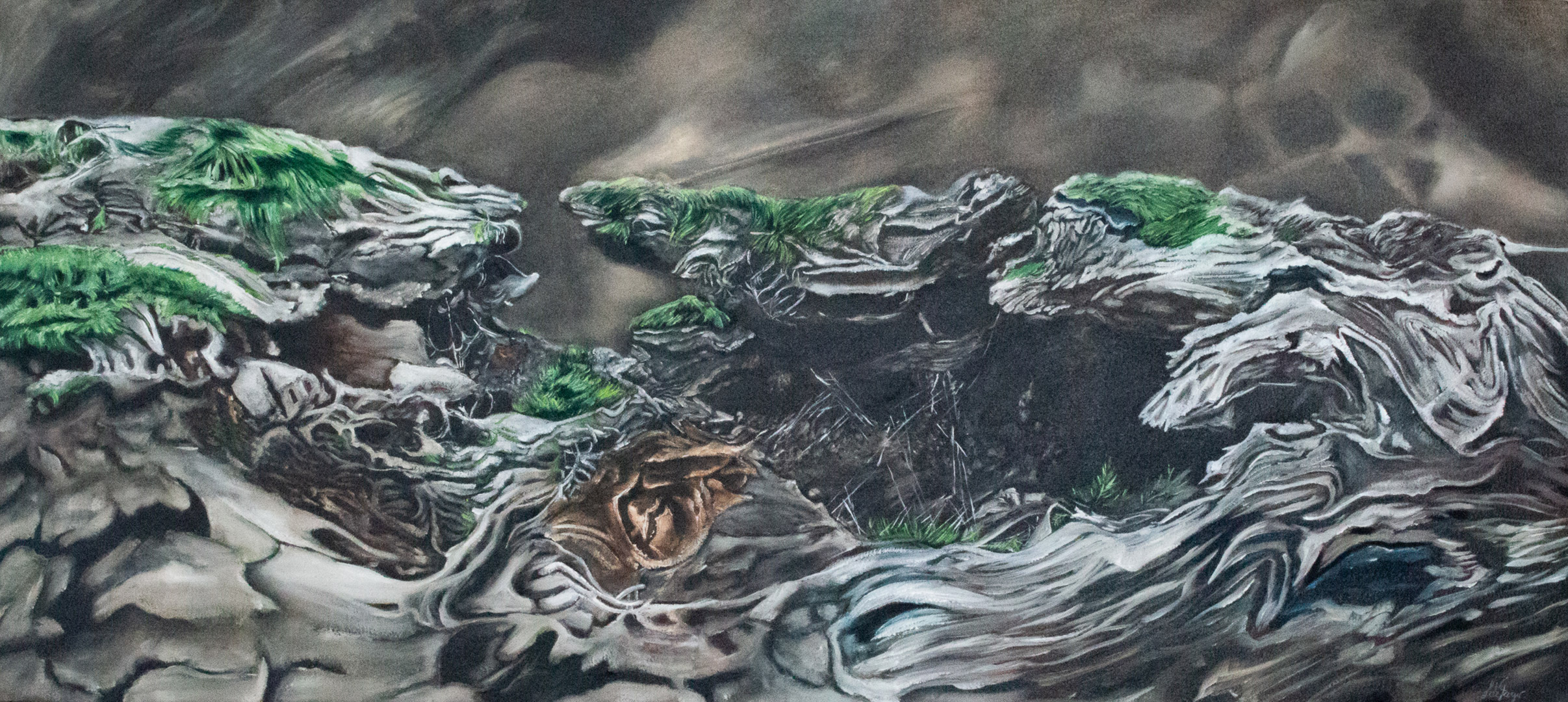
Laurette de Jager is a visual artist residing in South Africa, she is currently working toward her PhD in Art through Unisa. Laurette describes the objective of her work as: finding new ways to exist in a dying world. She was selected as one of Art.co.za’s Ten Artists to Watch in 2023.
- function(){var e=document.createElement('script');e.setAttribute('type','text/javascript');e.setAttribute('charset','UTF-8');e.setAttribute('src','https://assets.pinterest.com/js/pinmarklet.js?r='+Math.random()*99999999);document.body.appendChild(e)})([↩]
